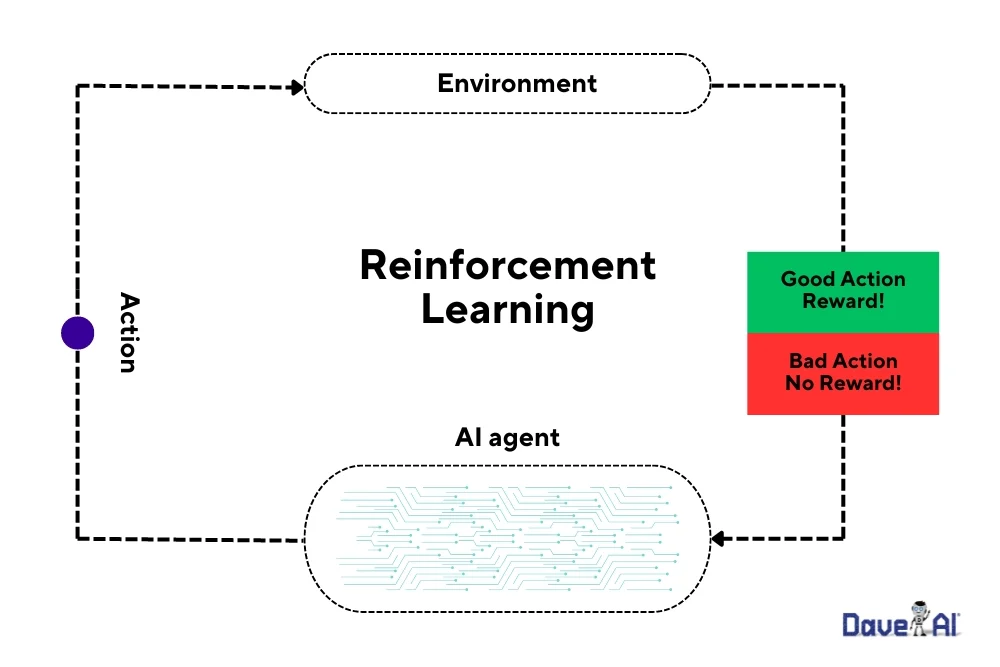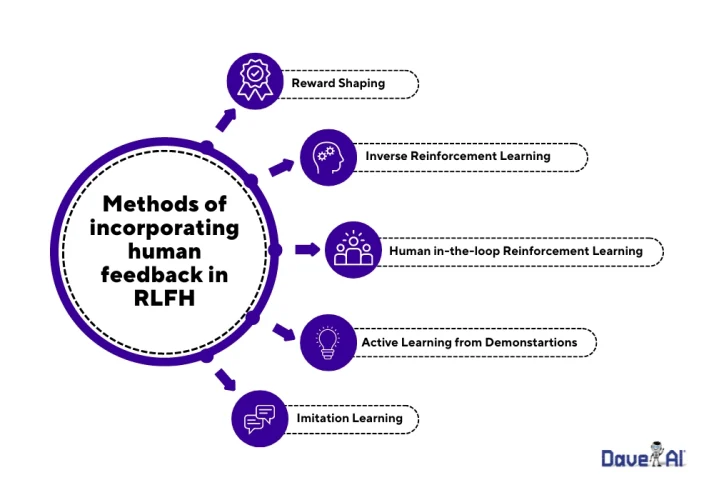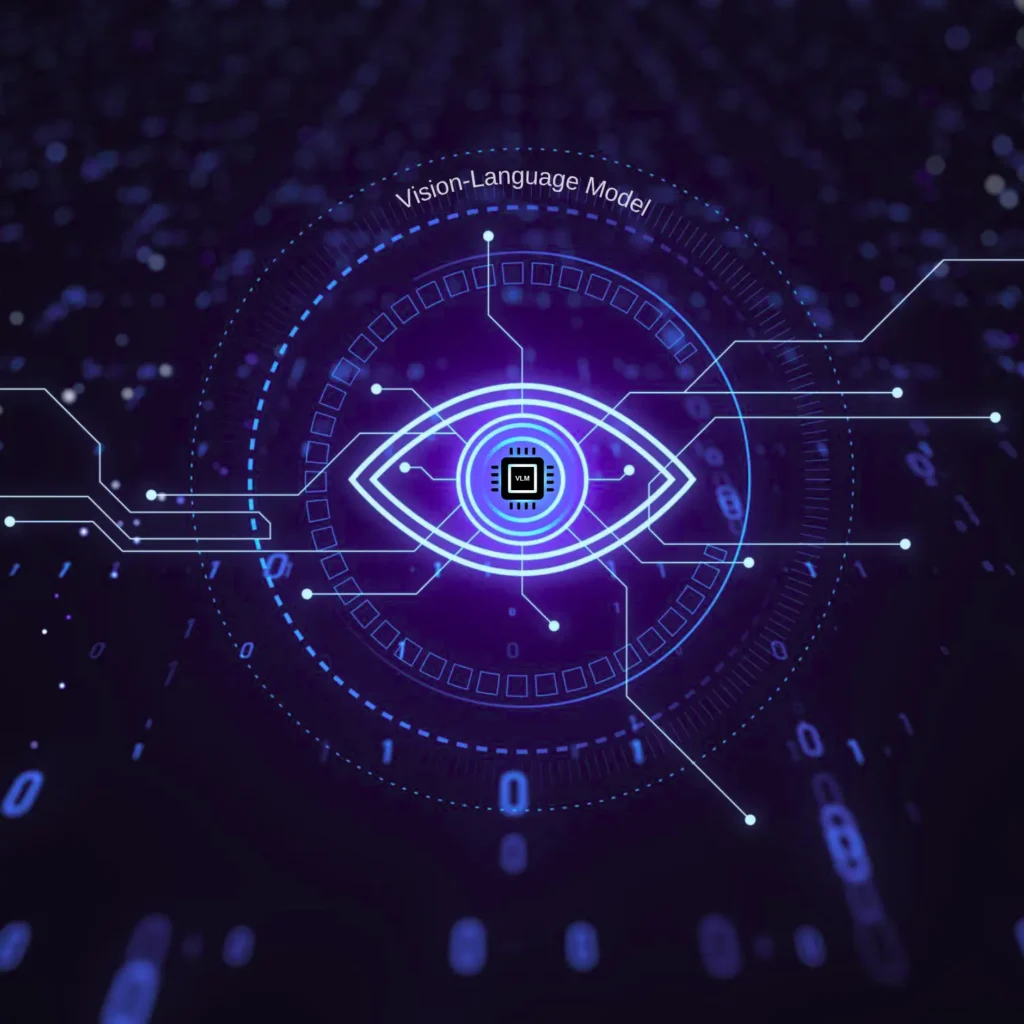Hit and trial work best for most humans during their learning curve, and the software is no different. That’s exactly the case with Reinforcement learning in AI. Reinforcement learning is a machine learning technique in which the software actions that bring it closer to the goal are reinforced. Additionally, all the actions that detract it from the goal are ignored.
The algorithm uses a reward-and-punishment idea, which is very similar to what parents use with children. It learns from experience what to do and what not to do. Do you want to know where RL is used? Some fields that have seen the usage of RL models are Natural Language Processing, finance, automobiles, healthcare, and engineering.
Are you curious to know how reinforcement learning in AI works and what its different types and applications are? Dive in as we break down the concept for you.
Basics of Reinforcement Learning in AI
Reinforcement learning finds its roots in behavioral psychology, which aims to teach humans and animals. For example, a child will earn a reward, mostly in the form of a treat or praise, when they do something good and will be punished when they do something bad, such as not studying or hitting someone.
This will be how children learn the end reward of their activities. Likewise, the RL algorithm tries out different activities to determine the end result of each and continues with the one that is rewarded the best.

There are multiple components in the RL algorithm to understand, including:
- Agent: The agent is the machine learning algorithm or the autonomous system.
- Environment: It refers to the adaptive problem space. It includes attributes like rules, values, variables, and boundaries.
- Action: It refers to the different steps taken by a reinforcement learning model to navigate through the environment.
- Rewards: The end results of the action are known as rewards.
There are three main kinds of learning models– Supervised, unsupervised, and reinforcement. Let’s draw a distinction between these before we proceed.
Supervised learning is a part of the subcategory of ML and AI, which uses labelled data to predict outcomes correctly.
Unsupervised learning, on the contrary, aims to identify the hidden patterns in data that are not labeled. In this case, we do not have any output variables that can be predicted.
Lastly, RL, as we have talked about, is a hit-and-trial method where different actions are tried to learn from the feedback.
How Reinforcement Learning in AI Works
One very common problem that RL models come across is the exploration and exploitation trade-off. That’s because as soon as the model comes in contact with a new environment, it must decide whether to use the same work and past experiences or explore more.
Exploitation, is a way of exploiting the already known information. It is when the earlier tried results are used to get good rewards instantly.
Against this, exploration simply entails exploring more; it is where the algorithm desires to expand its knowledge base. Here, what’s in question is the long-term reward.
There’s another aspect of the RL model, its ability to learn from human feedback. Here, human feedback is used to aim at reward maximization. Since we know that the ultimate aim for all AI-based models is to perform just how humans do, this model takes direct feedback from humans to reach the ideal.

Now, are you curious to know how the training of the RL models takes place? The training process of reinforcement learning works by simply providing it inputs. From the inputs fed, the model gives the outputs. Post this, it’s up to the user to decide whether they wish to punish the model or reward it.
Types of Reinforcement Learning Algorithms
Different types of reinforcement learning algorithms are crucial to understand. Here is all you need to know about the three main types of algorithms:
- Value-based methods: In simple language, value-based methods are like having a compass that leads you in the right direction. They analyze the value of different actions to select an option that would maximize the optimal value chances. This algorithm involves an iterative process and is thus known as value iteration.
- Policy-based methods: This method is like having a map that tells you the right direction to take under all circumstances. There is no need to estimate the value of the action. Instead, the policy is directly optimized. It can be understood as a set of instructions to help you achieve your goal.
- Model-based methods: Lastly, we have model-based methods in which the agent can predicate the reward and take action to maximize it. This method is employed in cases where the agent has complete knowledge of the environment and the reward of the actions in that environment. This type is best suited in static or fixed environments.
Applications of Reinforcement Learning in AI
Now that we know the building blocks of reinforcement learning in AI, let us look at its applications to understand it better. The most common applications of the algorithm are in the following industries:
Gaming and strategy development: Reinforcement learning’s role in gaming is at the forefront. It can provide a personalized experience, develop a challenging opponent, and optimize game strategies. Let’s take the example of Atari Games. The Deep reinforcement learning(DRL) process trained an agent to play different Atari games such as Breakout, Space Invaders, and Pong to give a human-like performance.
Robotics: Since robotics perform based on a sequential nature, reinforcement learning plays a significant role in it. Robots can learn how to interact with various environments, which makes them highly useful in industrial automation. An example of this is Google AI, which applied this approach to robotics grasping, where seven real-world robots ran for 800 robot hours in a period of 4 months. Another example here is from the University of California, Berkeley, where the Robotics team used sim-to-real reinforcement learning to train robots to perform simple activities such as walking while carrying loads.
Finance: No model tells what to do in a particular market situation or market prices. That’s where the role of the RL model comes up. The model uses benchmarks set as the optimal performance. An example of this use case is IBM, which uses the RL-based model to make financial trades. It works based on every financial transaction’s loss or profit reward function.
Healthcare: The role of RL in healthcare is to provide patients with treatments based on the policies learned with RL. The RL Bots increase diagnosis efficiency to predict the onset of a disease and make people aware sooner than before.
Advantages of Reinforcement Learning
Now that we’re aware of how and where to use reinforcement learning, let’s weigh its pros and cons. The core advantages of using RL in AI are:
- Understanding complex environments: The RL model can work well in a complex environment. They can outperform humans in complicated environments. This is because they adapt quickly to complex environments to optimize the results.
- Limited need for human interaction: There’s no better advantage to RL than the fact that it minimizes the need for human interaction. The traditional functioning of ML algorithms requires human intervention to label data pairs. On the contrary, RL learns itself and can also integrate human feedback.
- Focuses on long-term goals: With RL, you can focus on long-term goals and optimize the long-term rewards. This helps immensely in the real-world scenario where you will not always get immediate feedback to train the model.
Disadvantages of Reinforcement Learning
With these advantages, there are also certain limitations to the RL algorithm, including:
- Not suitable for simplified problems: It is not suitable for finding solutions to simplified problems. Not only this but you also need vast data sets and computation to train the model in the first place.
- Dependence on reward function quality: The functioning of the RL algorithm depends on the quality of the reward function. A poor reward function design leads to difficulty in learning the behavior.
- Complicated interpretation: Lastly, the model has a limited capacity to comprehend why an agent behaves in a particular way. As a result, there might be issues in troubleshooting any problems that arise.
While considering the pros and cons of the algorithm is a must, we cannot ignore its ethical considerations. Some ethical factors to consider are:
- Bias and unfairness: If the training data for the RL model is biased, so will the results. Ensure that the data provided is diverse, representative, and free from bias.
- Data privacy: The security and privacy of the data shared for training purposes of the model can be compromised. Ensure appropriate data anonymization and encryption to prevent data misuse and protect users’ privacy.
- Value alignment: The RL models optimize certain rewards and value responses. You must ensure that these rewards and values are ethically aligned.
Real-world Examples
Want to know how different companies are using the reinforcement learning model? Here are two real world examples that stay at the top.
- AlphaGo: The first example is of AlphaGo, the brilliance of which was acknowledged by the famous Go champion Lee Sae Dol. He reflected on how Google had invited him to play against Go against AlphaGo, Google’s AI system. He ended up winning only one out of the five games he played against AlphaGo, which is when he realized how he had underestimated the skills of the AI system.
He talks about the excellent moves of the AI system, which also started getting used to teaching the new players about the game and building new strategies.
- Chatbots: This use case is perhaps a more familiar one. We’re all familiar with the functioning of chatbots that enhance the result by constantly working on the feedback. Here, the chatbot is the agent, and the user the environment. Chatbots are being used in different industries to simplify customer service and help with navigation.
Future of Reinforcement Learning in AI
At the heart of the reinforcement learning model is its ability to work and learn as humans do. Its self-training aspect and the reward system make it stand out from other such technological advancements.
With the present with reinforcement learning being appreciated, the future holds equal optimism. The future trends in RL will most likely focus on developing deep reinforcement learning models. We can also expect advancement with the multi-agent systems.
Progress might also be made by addressing sample inefficiencies and incorporating more structured representations.
With this, there are thriving opportunities for the RL model to scale, tackle complex equations with sparse rewards, and expand the reach of RL models into other use cases, such as environmental sustainability. Not only this but some resolution towards the ethicality and societal expectations is also sought in the future exploration of RL algorithms.
Conclusion
Reinforcement learning is a cornerstone in AI, standing firm due to its ability to mirror the human-like learning process. It helps machines adapt, learn, and improve their behavior through continuous interaction with the environment and the ability to learn from it.
Visit DaveAI on Quora to know more!



